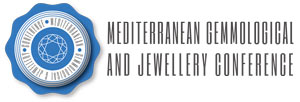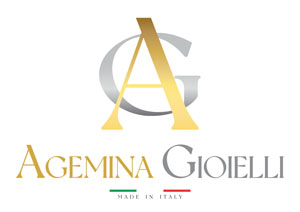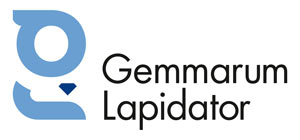In 2011, in Colonna (a small town not far from Rome), the excavation for the foundations of a private building led to the discovery of a monumental tomb from the Roman era. The sarcophagus found inside the tomb contained the mummified remains of a woman and an astonishing golden tiara enriched by sapphires.
While the findings were entrusted to the care of the Soprintendenza ai Beni Archeologici del Lazio (Monuments and Fine Arts Department), the study and characterization of the jewel and gems were assigned to Enrico and Flavio Butini who have described here below the tests they have carried out.
Test results have provided an unexpected geographic origin determination for the tiara’s sapphires; this has significantly extended the historical and archaeological research scenario.


Introduction (by Micaela Angle and Flavio Altamura)*
The jewellery piece in question comes from an archaeological survey conducted during the preliminary excavation works performed by the Superintendence for Archaeological Heritage of Lazio (SBAL).
The survey, involving the construction of a private building, was carried out in the first half of 2011 under the scientific supervision of the local official, Dr Micaela Angle, in the locality of Pian Quintino – Colonna (Rome) on the north-eastern slopes of the Alban Hills.
Investigations along the current route of Via Valle della Chiesa began in 2005, and led to the partial discovery of a necropolis with eleven burial sites dating back to the imperial Roman period. These tombs were arranged in at least two fenced sites along a paved road, which nowadays is known as Via Labicana.
The western nucleus, with a masonry fence, includes a monumental tomb (tomb 11), (Figures A, B) surrounded by infant graves. The mausoleum is a tomb-altar; although the upper part of the structure has been levelled by subsequent interferences and disturbances, it is likely that there was a platform on top to perform the rites. The chamber once housed a white marble sarcophagus with a decorative slate on one of the longer sides of the casket and a roof-like cover. It is likely that the artefact was imported from Proconnesus.


Subsequent microstratigraphic excavation of the sarcophagus, performed at the National Museum of Prenestino, allowed to recover the remains of the buried individual (Figures C, D). She was a female aged about 40 at the time of death. The deceased was buried with a silver ring, a flabellum (?) and the jewellery piece in gold and sapphires being examined here (exhibit 2). At the bottom of the tank of the sarcophagus, were also found the remains of a hem in gold fabric, as well remnants of an organic fabric (linen-wool and silk), attributable to the clothing of the buried person.
The archaeological data collected show that the necropolis dates back to the imperial era, more specifically tomb 11 can be traced back to the first half of the third century A.D.
*Altamura F., Angle M., P. Cerino, A. De Angelis, N. Tomei; “Latum pictae vestis considerat aurum”. Sepolcri a Colonna; in G. Ghini (a cura di); Lazio e Sabina 9; Atti del Convegno Nono Incontro di Studi sul Lazio e la Sabina; Roma 27-29 Marzo 2012; pp. 255-260

Description of the jewellery piece
The necklace-tiara (weight: 58.72 grams; Length: 29 cm; fig. 1) is made up of twenty-five round wire elements in gold, which form two opposing eyelets, and which are joined together to create a “knot of Hercules” pattern. This pattern is repeated in various sizes, gradually increasing towards the central part of the jewel. The supporting structure of the links is made up of two gold strips, arranged in a cross and welded together (Figures 2, 3, 4). The join connecting the links is covered by small welded gold spheres (Figures 5 and 10). Each link is designed to accommodate seven alternating blue gems (identified by the gemmological analysis as a sapphire – variety of corundum). The two semi-spherical sapphires (No. 1 and 7) have a hole and are fixed to the link through two gold wires. One end of the wire is welded to the base and the other end threads halfway through the hole of the stone. This technique is also used for the links without gems, and allows the stones to be suspended at the base. The remaining oval-shaped gems (No. 2, 3, 5 and 6) with a cabochon cut, are fixed by means of “wrought” bezels (Figure 6).



The cabochon-cut round sapphire in the centre (No. 4) has a drill hole that passes from the top to the bottom and is fixed through a pin joined to the base and beaten on the end almost like a nail (Figure 7).
The link on the left of the central one (No. 12) also has a free pin with a beaten head (Figure 7). It acted as a support to a gem (a pearl?) which is now missing.



The wires used to make the knots have been carefully polished and finished, while those used to construct the claws have been left unfinished (Figure 8-12). This is evident from the spiral lines remaining on the claws (Figure 10) and from the pseudo-facets that instead appear on the wires forming the link (Figure 11).
All the curved claws of the bezels, including those not adorned with sapphires, show signs of forcing (Figure 12). These signs were made by a metal tool used by the goldsmith to push the claws inside the holes of additional gems (or pearls?), which are now no longer present.






Material and methods
The seven sapphires mounted on the tiara have been identified by spot method, using a refractometer Rayner Dialdex and by Raman analysis using a Raman MAGI “Gemmoraman 532”.
The authors ran EDXRF (Energy Dispersive X-Ray Fluorescence) tests on all seven samples with an OMEGA X PRESS of Innov-X System.
They also carried out UV-VIS-NIR spectroscopic tests only in some directions due to the fragility and the dimensions of the jewel; the instruments used were a PYE UNICAM SP8-100 and a JASCO V-630.

Results
Analysis of the alloy
In several parts, the EDXRF technique (Energy Dispersive X-Ray Fluorescence) measured the gold purity to be between 99.7 and 99.8 % with negligible amounts of iron, copper and nickel (Figure 13). The analysis performed near the welded areas gave the same gold purity.



Gemmological Analysis
All the analysed gems were found to be natural sapphires (variety of corundum). The EDXRF (Krzemnicki 2014, Joseph et al. 2000) analysis revealed trace elements which suggested that four of the sapphires are of Basaltic origin (No. 1, 2, 4 and 7) (Figure 14) and the other three are of non-Basaltic origin (Figure 15). For basaltic deposits, beside the modern well-known origins, such as Thailand and Cambodia (which could have reached Rome through the “Oriental Roads”), we can take into account the Massif Central deposit in France (Gaillou 2003. Giuliani et al. 2008, Medard et al. 2012); it gave some noticeable gem quality sapphires during the Middle Ages and it is not to be completely excluded that its gems were found and employed some centuries before.
Every hypothesis described above, is supported by the results obtained with UV-VIS spectroscopy (Krzemnicki et al. 1996, Themelis 2010) (Figure 16).
With the exception of sapphire number 2, microscopic observation also provided indications to support the above-mentioned geographical origins (Andergassen and Bossi 1995, Gübelin and Koivula 2008). More specifically, the photos in figure 17 show the gems considered to be of Basaltic origin, while the photos in figure 18 show the gems considered to be of non-Basaltic origin.






Conclusions
Gemmology is becoming more and more employed in multidisciplinary studies, and the combination with archaeological investigation is certainly one of the most stable and profitable cooperation. The results that have just been presented for instance, are giving great impulse to the research in the field of ancient trading and trade routes. Indeed, researchers could not imagine that the trade of precious stones could be so complex: they could not figure out the presence of ancient merchants who had access to such remote and distant gem sources.
Some technical disciplines such as gemmology are approaching archaeology with excellent results. More and more Museums, Monuments and Fine Arts Departments etc., are equipping their own scientific facilities; we wish that the development and the formation of new gemmological labs is going to give birth of a new professional role, specialized in archaeo-gemmology.






References
Altamura F., Angle M. P. Cerino, A. De Angelis, N. Tomei; “Latum pictae vestis considerat aurum”. Sepolcri a Colonna; in G. Ghini (editor); Lazio e Sabina 9; Atti del Convegno Nono Incontro di Studi sul Lazio e la Sabina; Roma 27-29 Marzo 2012; pp. 255-260
Andergassen W., Bossi G., 1995. Caratteristiche interne delle gemme. Giovanni Bossi & C., Roma e Cavalese, settembre 1995.
Dhaemaratne P.G.R., Ranjith Premasiri H.M., Dillimuni D., 2012. Sapphires from Thammannawa, Kataragama Area, Sri Lanka. Gems & Gemology, 48(2), pp. 98-107.
Gaillou E., 2003. Les saphirs du Massif Central: etude minéralogique des saphirs du Sioulot du Mont Coupet e du Menoyre.
Giuliani G., Fallick A., Ohnenstetter D., Pegere G., 2009. Oxygen isotopes composition of sapphires from the French Massif Central: implications for the origin of gem corundum in basaltic fields. Miner Deposita, 44, 221-231.
Gübelin E.J., Koivula J.I., 2008. Photoatlas of inclusions in Gemstones, vol. 3, Opinio Publishers, Basel, Switzerland.
Joseph G., Lal M., Shinde P.S., Padalia B.D., 2000. Characterization of gem stones (rubies and sapphires) by energy-dispersive x-ray fluorescence spectrometry. X-Ray Spectrometry, Forensic Science, 29 (2), pp. 147-150.
Kan-Nyunt H-P., Karampelas S., Link L., Thu K., Kiefert L., Hardy P., 2013. Blu Sapphires from the Baw Mar Mine in Mogok. Gems & Gemology, 49(4), 223-232.
Krzemnicki M.S., Hänni H.A., Guggenheim R., Mathys D., 1996. Investigations on sapphires from an alkali basalt, South West Rwanda. J. Gemm., 25(2), 90-106.
Krzemnicki M.S., 2014. Scottish Gemmological Conference
Schmetzer K., Medenbach O., 1988. Examination of three-phase inclusions in colorless, yellow and blue Sapphires from Sri Lanka. Gems & Gemology, 24(2), 107-111.
Schwartz D., Kanis J., Schmetzer K., 2000. Sapphires from Antsiranana Province, Northern Madagascar. Gems & Gemology, 36(3), 216-233.
Smtih C.P., Kammerling R.C., Keller A.S., Peretti A., Scarratt K.V., Dang Khoa N., Repetto S., 1995. Sapphires from Southern Vietnam. Gems & Gemology, 31(3), 168-186.
Themelis T., 2008. Gems & Mines of Mogok. A&T Publications, Thailand, 352 pp.
Themelis T., 2010. The heat treatment of ruby & sapphire, Second Edition. A&T Publications, Thailand, 384 pp.
Request your copy of Rivista Italiana di Gemmologia or buy a yearly subscription
Article by Enrico Butini and Flavio Butini, published on Rivista Italiana di Gemmologia #1, May 2017.
















